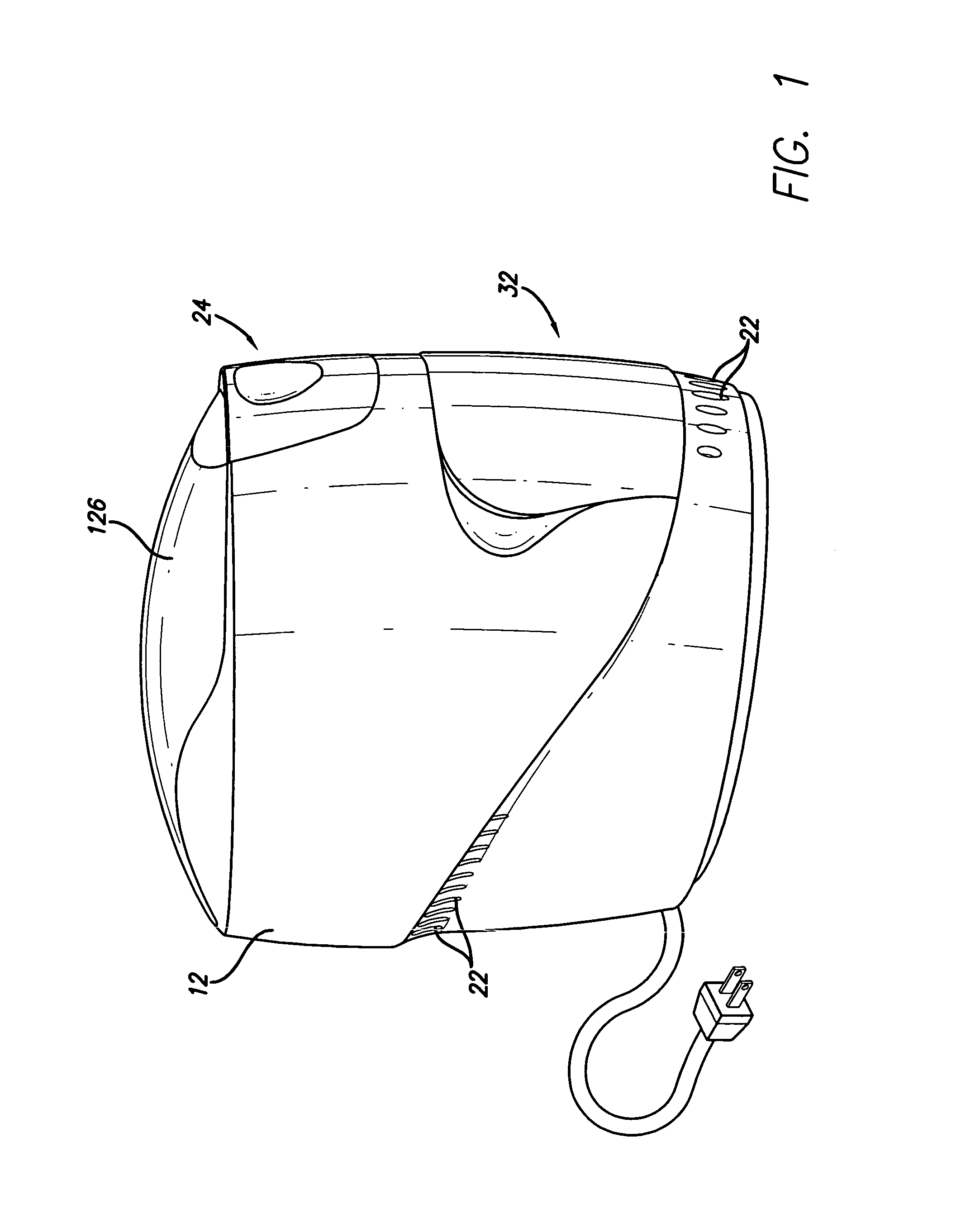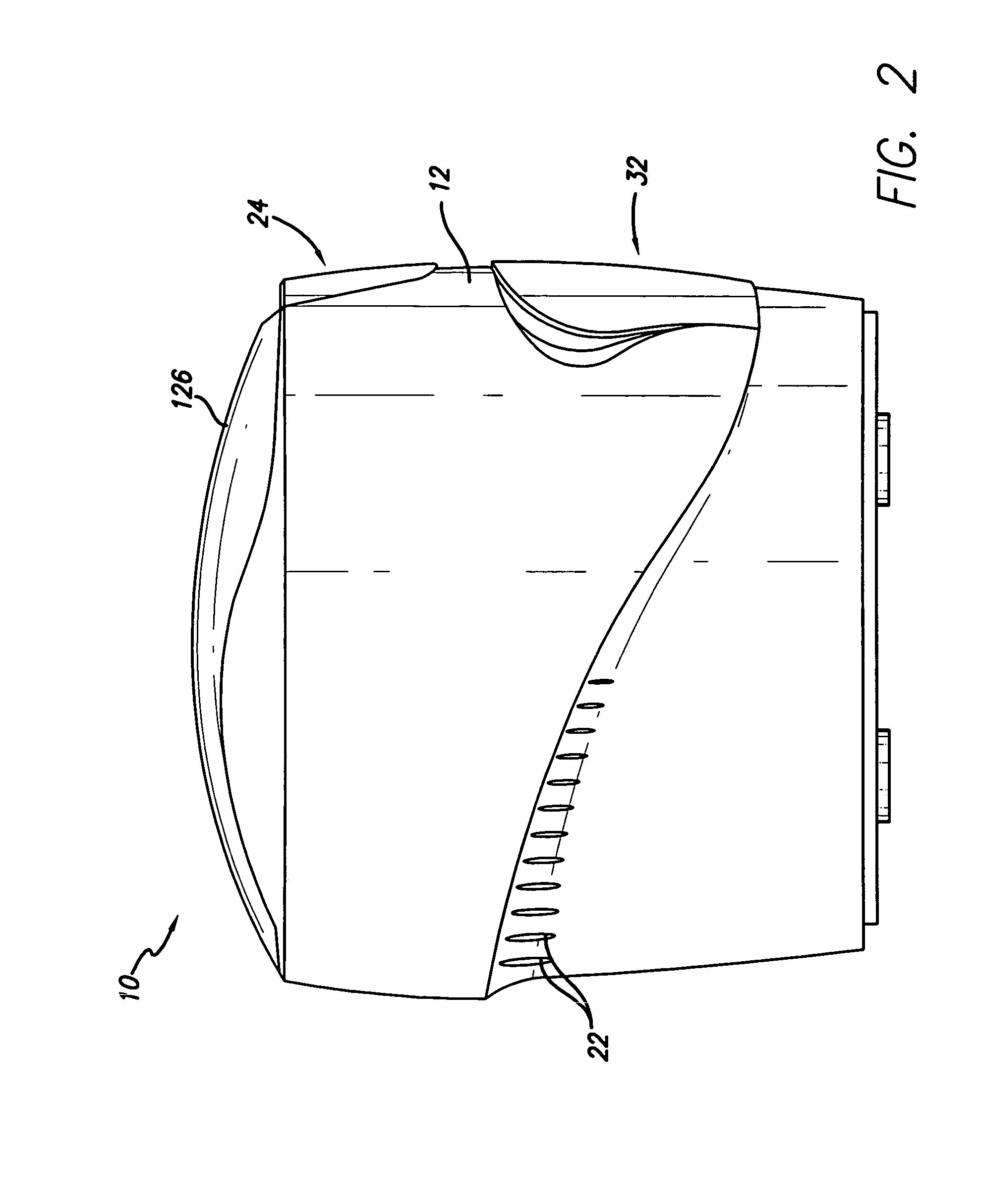Portable microderm abrasion device
a microderm and abrasion technology, applied in the field of skin treatment system, can solve the problems of skin damage, high operating cost, and high operating cost, and achieve the effects of convenient operation and service, convenient overtreatment of skin, and convenient operation and maintenan
- Summary
- Abstract
- Description
- Claims
- Application Information
AI Technical Summary
Benefits of technology
Problems solved by technology
Method used
Image
Examples
Embodiment Construction
FIGS. 1, 2, and 10, for example, illustrate a portable microderm abrasion device indicated generally at 10 that is comprised of a hollow casing or housing 12 with a lid 126 on its top and supporting rubber feet 13 on its bottom. Within the housing 12 there is an electrically operated motor 14, and an air pump 16 operated by the motor 14. The electric motor 14 is a conventional one hundred twenty volt, alternating current motor, while the air pump 16 is also conventional. The motor 14 and the air pump 16 are partially visible in the broken away view of FIG. 10. The air pump 16 has an air suction port 18 and an air exhaust port 20 that exhausts air into the hollow interior of the casing 12. Air is discharged from the interior of the housing 12 through vent openings 22.
The microderm abrasion unit 10 has a hollow exfoliation grit supply cartridge 24 that is removably located within the housing 12 and which has a grit discharge opening 26, visible in FIG. 19. The discharge opening 26 is ...
PUM
 Login to View More
Login to View More Abstract
Description
Claims
Application Information
 Login to View More
Login to View More - R&D
- Intellectual Property
- Life Sciences
- Materials
- Tech Scout
- Unparalleled Data Quality
- Higher Quality Content
- 60% Fewer Hallucinations
Browse by: Latest US Patents, China's latest patents, Technical Efficacy Thesaurus, Application Domain, Technology Topic, Popular Technical Reports.
© 2025 PatSnap. All rights reserved.Legal|Privacy policy|Modern Slavery Act Transparency Statement|Sitemap|About US| Contact US: help@patsnap.com



